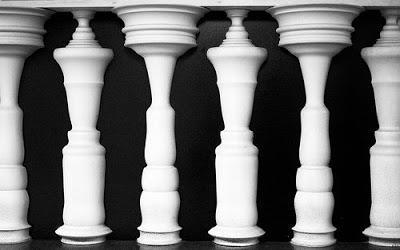 There’s a rhetorical trick called apophasis where you point out something by not pointing it out. For example, Donald Trump’s “I refuse to call Megyn Kelly a bimbo.”
There’s a rhetorical trick called apophasis where you point out something by not pointing it out. For example, Donald Trump’s “I refuse to call Megyn Kelly a bimbo.”
But sometimes apophasis happens unintentionally. Someone will try to avoid talking about something, and the omission will leave that thing shrieking in your head like a klaxon. Usually, it’s something political, or something that might offend people. They can’t figure out how to present it tastefully, so they slash Gordion’s knot and cut it out entirely.
The result, when it happens in art, is a weird kind of hole. Cartoons about Vikings where there’s not a hint of rape or plunder. TV shows about the antebellum south without a hint of slavery.
In Indiana Jones and the Last Crusade (the “when will they make another one?” movie), Harrison Ford runs into some goosesteppers and says “Nazis…I hate these guys.” This line sums up the approach of these films: obvious and simple themes presented in an emotionally satisfying way.
In the recent Indiana Jones and the Kingdom of the Crystal Skull (the “WHY did they make another one?” movie), he encounters some Russkies and says “Russians…” Then there’s a beat where you wait for him to say “…I hate these guys”, but he never does. The effect is jarring, like stepping on a stair that isn’t there. You can actually feel that a line was cut out: it almost leaves an echo. They had the setup all worked out…and then someone’s nerve broke. “Guys, we can’t have Indie say he hates Russians.”
There’s lots of books and movies like that, where it’s obvious something quite specific ended up on the cutting room floor. Movies seem like they’re setting us up for a sex scene…and then snap out of it, suddenly enough to give you whiplash. When I see something like this, my imagination goes crazy. What happened behind the scenes? Did someone write the movie, scandalise some studio head, who then gave it to an underling to rewrite in half an hour? It breaks the fourth wall harder than an actor flipping off the camera.
In art theory they talk about “figure vs ground”. Figures are the things in a picture you’re supposed to focus on – Magritte’s not-a-pipe, Holbien’s terrifying elongated skull. Ground is all the background elements – anything that isn’t a figure.
In practice, it gets pretty complicated, because often the figure only makes sense in reference to the ground. Imagine if someone cut the Mona Lisa out of her painting using a pair of scissors – she would still be there, the vast gulf of negative space would be as good as a parking nameplate: THIS SPOT RESERVED FOR MRS LISA GHERARDINI. In fact, she might be more obvious than she was before. The missing area in the canvas would be stark, absolutely impossible to ignore.
Imagine a CIA report that has lines blacked out. You wouldn’t be able to put that aside: you’d be incredibly curious about what was originally there. In the same way, it’s often very conspicuous in art when something should be there, but isn’t. You can’t destroy and not create, the negative space remains, and sometimes the best way to draw attention to something is to remove it.
No Comments »
Comments are moderated and may take up to 24 hours to appear.
No comments yet.
